As you read in the title of this post, when I get out of my new house every day, the tree I find is a Baobag, the same one that the Little Prince needed to prune every day to control its growth, I will tell you a little about this phenomenal tree, sacred in africa among many cultures.
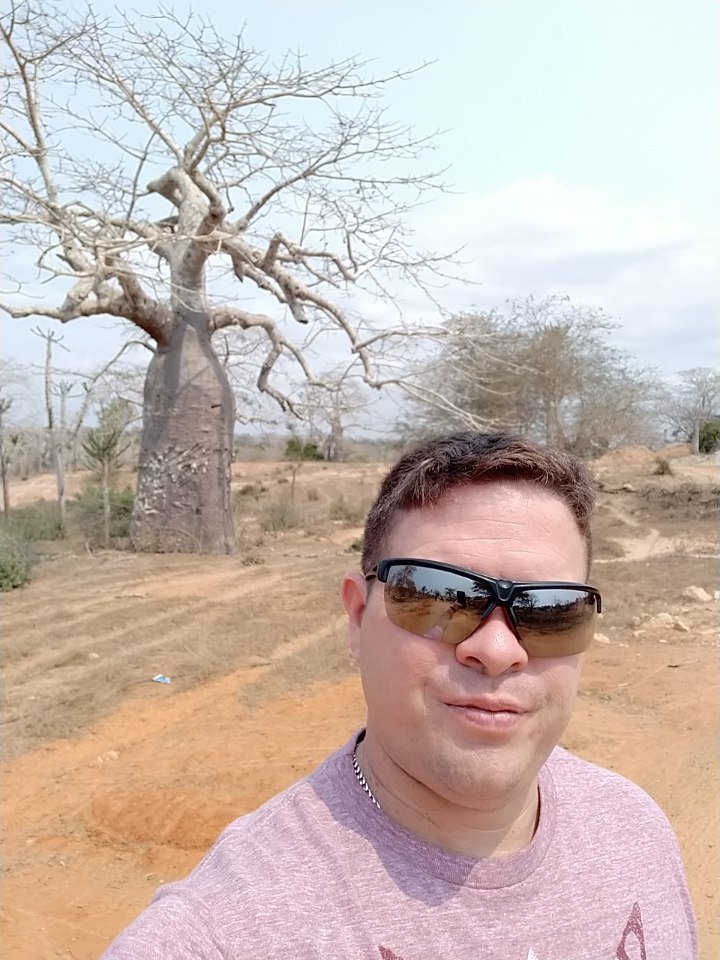
This majestic tree is known in Angola, the country where I am currently living as Imbondeiro, and has many myths and countless potentialities and properties, including medicinal ones. Taxonomically it belongs to the genus Adansonia, of the Malvaceae family whose members are trees popularly known as baobab, bottle tree or monkey bread. It contains eight species, of which six grow on the island of Madagascar, and of the other two, the best known, Adansonia digitata, grows on mainland Africa. The name of baobab has its origin from the Arabic ﺑﻬﺒﺐ (buhibab) "father of many seeds"
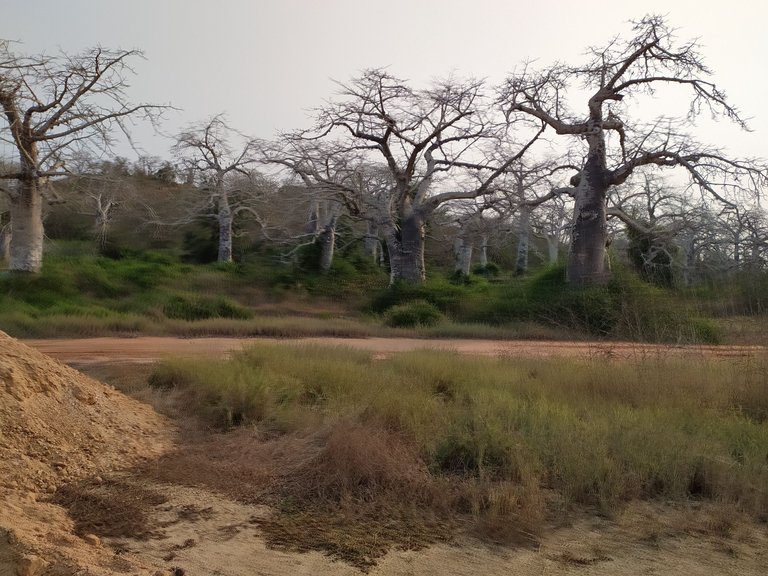
Called by the Africans "MAGIC TREE", "PHARMACY TREE", "TREE OF LIFE".
Its life is extremely long: most Baobabs live about 5,000 years, but in some areas of Africa there are specimens of more than 5,000 years. In 2015 I was visiting what is considered the oldest and largest specimen in Angola, located in Xangongo, a municipality in the southernmost province of the country, Cunene, the locals say that once 17 people tried to hug him and did not give him the complete return to the trunk. Normally this old giant of our planet lives in solitude and can reach 20m in height and 12m in diameter.
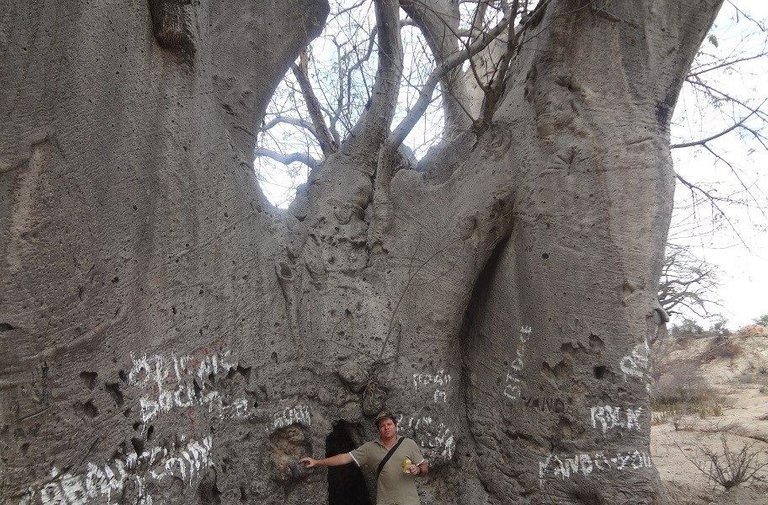
Its sacred value is respected by all African peoples; proof is that only the "wise or soba" can climb its branches to collect fruits and leaves. In some tribes it is still used to store water in its trunk, since it can store up to 100,000 liters of water inside where it is kept naturally clean, since contamination from external organic substances does not penetrate the bark.
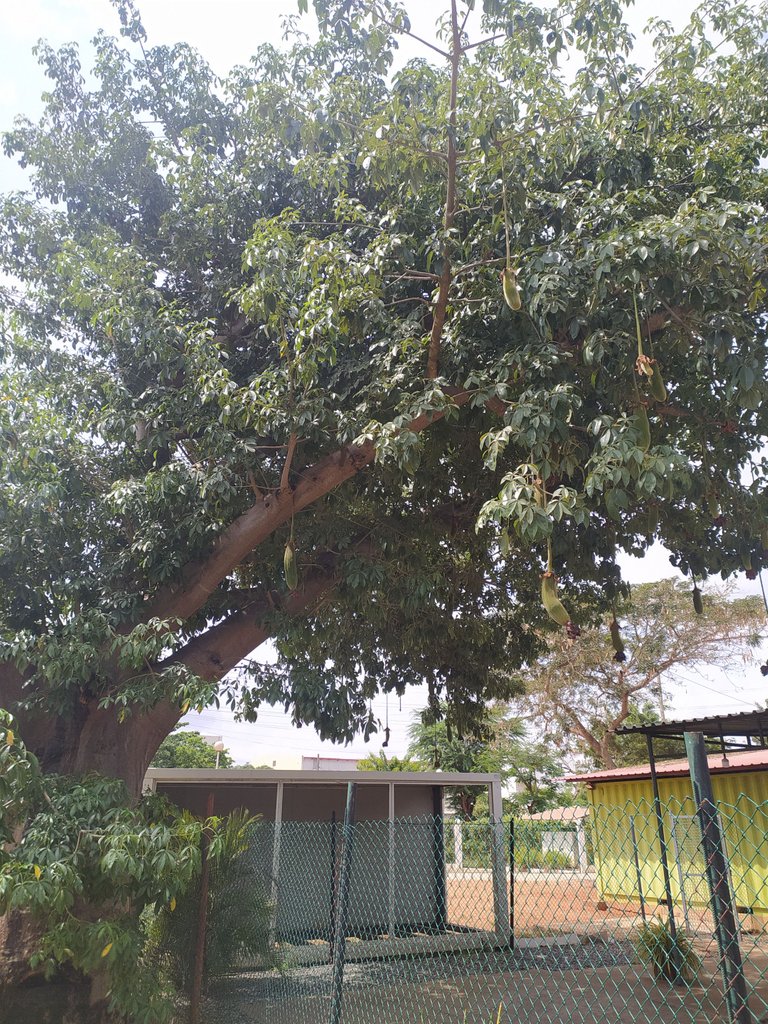
On other occasions, the interior of its hollow trunk has been used as a living room. Some communities choose it as an ideal place to establish alliances or commitments, since no one would dare to transgress a duty acquired under its branches: it is adored but also feared.
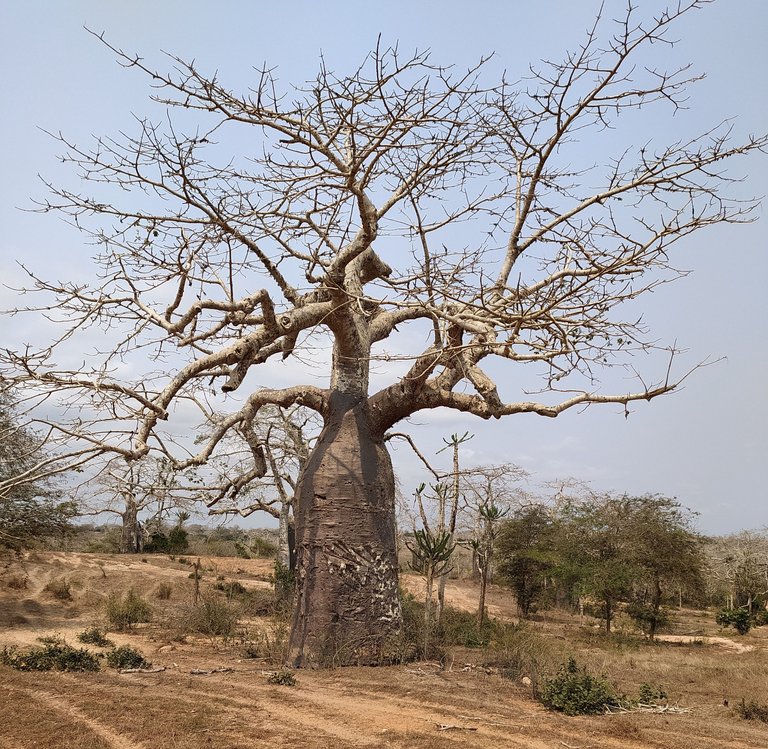
“It is a sacred tree for all the religions that have come into contact with it: Muslims make the containers they use to break their fast with it; the Christians carve with its wood the bowls that they use for baptisms; the Bushmen of South Africa believe, for their part, that the flowers offered by the baobab house spirits.
Under its shadow lovers make love and the dead are buried. In the hollows of the Baobab, rest the bodies of many "Griot", (the storytellers of Africa). And it is said that if a person drinks water in which baobab seeds have been dipped, he will be protected from attack by crocodiles. But if he dares to pluck a single flower from the baobab, he will die devoured by lions, (africafundación.org)
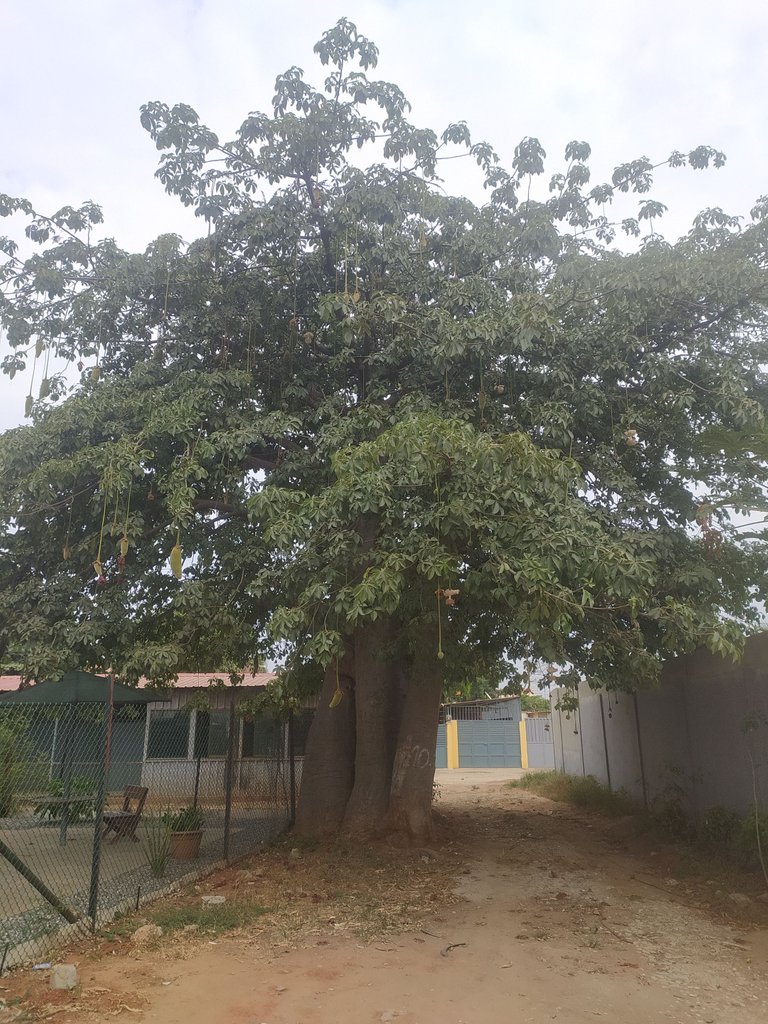
One of the legends of this magnificent tree states that: One day, the baobab, realizing its strength and majesty, thought that it was worthy of being with the gods, so it would grow and grow until it reached its paradise. The baobab thought that he was a god like those who had created him. But this was a mistake, the baobab's arrogance and selfishness made the gods angry. The fury of the gods got the baobab a punishment so that it would learn its lesson. The next morning the baobab realized that his flowers were gone and that his tops were not as precious as before. The gods had punished the great tree by making it grow upside down, with its roots skyward and its flowers underground. This is the reason why the baobab has such a peculiar shape. And it is one of the most beautiful trees.
Its symbolism in the little prince by the genius of Antoine De Saint-Exupery, according to various authors can be read as a condemnation of Nazi Germany and of the blind eye the rest of the world turned to the actions of Adolf Hitler.
Or it can also refer to: we cannot forget that it is in our hands whether or not we want to be diligent gardeners. We can remove the bad plants on time. The bad seeds have no use for us, so we can control them with education and dicipline.
“......It is a question of discipline….When you’ve finished your own toilet in the morning, then it is time to attend to the toilet of your planet, just so, with the greatest care. You must see to it that you pull up regularly all the baobabs, at the very first moment when they can be distinguished from the rose-bushes which they resemble so closely in their earliest youth…” Antoine De Saint-Exupery.
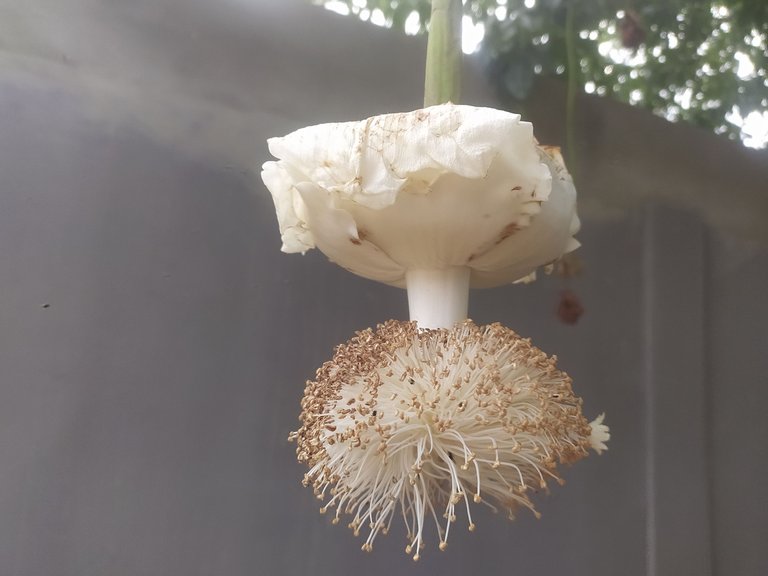
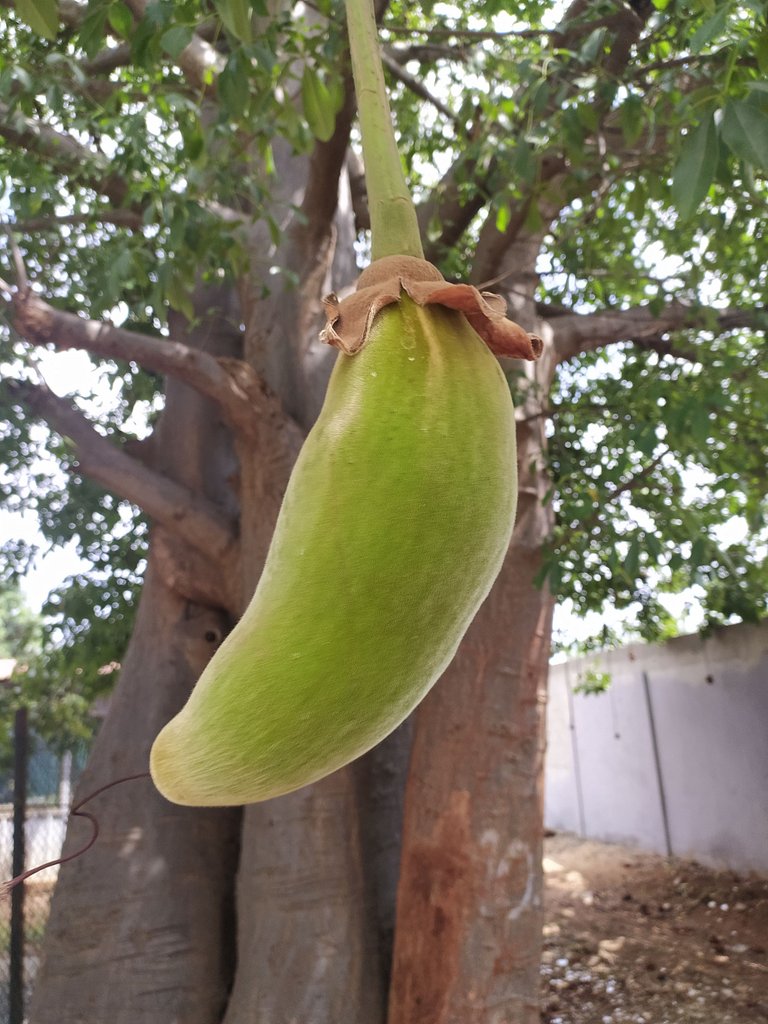
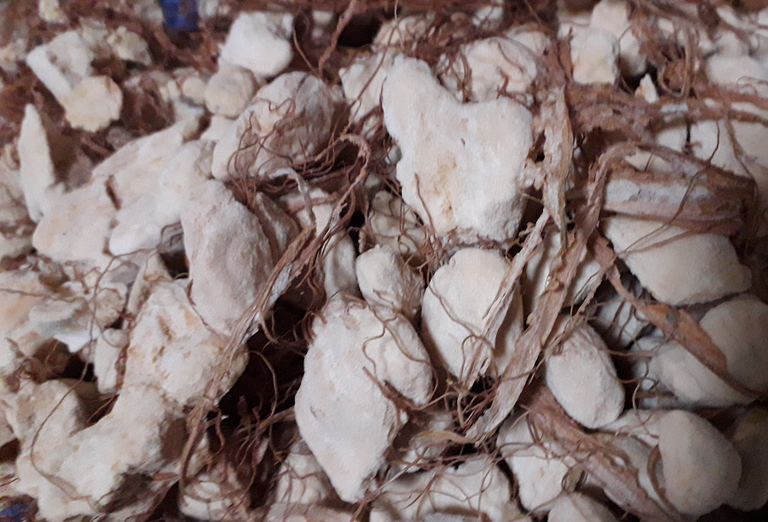
Another of the uses and benefits of the Imbondeiro, as it is known among the natives of Angola, is the mass produced by its fruits, known as Mucua. In popular culture it is used as natural juices, however there are various manufacturing brands of soft drinks and juices that already market with it, its flavor is very similar to that of tamarind juice, very refreshing in its bittersweet flavors. Among its nutritional benefits we can mention:
They are very rich in vitamin C, fiber, calcium, iron and potassium:
- Contributes to the normal functioning and strengthening of the immune system.
- Protects cells against oxidative damage (it is an antioxidant).
- Helps reduce tiredness and fatigue.
- Improves iron absorption so it helps protect our cardiovascular health.
- Contributes to the formation of collagen for the normal functioning of the skin, cartilage, gums, bones and blood vessels.
- Contains a high fiber content (50%) so it helps control and balance our digestive system, as well as intestinal transit.
All photos were taken by my Xiaomi redmi Note 8
ESPAñOL
Asi como lo leyeron en el tiutulo de este post al salir cada dia de mi nueva casa el arbol que me encuentro es un Baobag, el mismo que el principito necesitaba podar cada dia para lograr controlar su crecimiento, les comentare un poco de este fenomenal arbol, sagradio en africa entre muchas culturas.
“El suelo del planeta estaba plagado de ellas. Y de un baobab, si uno se deja estar, no es posible desembarazarse nunca más. Obstruye todo el planeta. Lo perfora con sus raíces. Y si el planeta es demasiado pequeño, y si los baobabs son numerosos, lo hacen estallar.” – The Little Prince –
Este majestuoso arbol es conocido en Angola, pais donde me encuentro viviendo en el momento como Imbonfeiro y tiene muchos mitos y un sinnumero de potencialidades y de propiedades, entre ellas medicinales. Pertenece taxonomicamente al género Adansonia, de la familia Malvaceae cuyos miembros son árboles conocidos popularmente como baobab, árbol botella o pan de mono. Contiene ocho especies, de las cuales seis crecen en la isla de Madagascar, y de las otras dos, la más conocida, Adansonia digitata, crece en África continental. El nombre de baobab tiene su origen del árabe ﺑﻬﺒﺐ (buhibab) «padre de muchas semillas»
Llamado por los africanos “ÁRBOL MÁGICO”, “ÁRBOL FARMACIA”, “ÁRBOL DE LA VIDA. Su vida es extremadamente larga: la mayoría de los Baobabs vive unos 5000 años, pero en algunas zonas de África hayan ejemplares de más de 5000 años. En el año 2015 estuve visitando el que se considera el ejemplar mas antiguo y mas grande de Angola, hubicado en Xangongo, municipio de la provincia mas sur del pais, Cunene, cuentan los lugareños que una vez lo intentaron abrazar 17 personas y no le dieron la vulta completa al tronco. Normalmente este viejo gigante de nuestro planeta vive en soledad y puede alcanzar los 20m de altura y 12m de diámetro.
Su valor sagrado es respetado por todos los pueblos africanos; prueba es que solo el “sabio o soba” puede subirse a sus ramas para recoger frutos y hojas. En algunas tribus aun es utilizado para almacenar agua en su tronco, pues puede almacenar hasta 100.000 litros de agua en su interior donde se conserva naturalmente limpia, ya que la contaminación de substancias orgánicas exteriores no penetran en la corteza.
En otras ocaciuones ya ha sido utilizado el interior de su tronco hueco como habitación de vivienda. Algunas comunidades lo eligen como un lugar idóneo para establecer alianzas o compromisos, ya que nadie osaría transgredir un deber adquirido bajo sus ramas: es adorado pero también temido.
“Es un árbol sagrado para todas las religiones que han entrado en contacto con él: los musulmanes fabrican con él los recipientes que usan en la ruptura del ayuno; los cristianos tallan con su madera los cuencos que emplean para los bautizos ; los bosquimanos de Sudáfrica creen, por su parte, que las flores que el baobab ofrece albergan espíritus.
Bajo su sombra se aman los enamorados y se entierra a los muertos. En los huecos del Baobab, descansan los cuerpos de muchos “Griot”, (los narradores de historias de África). Y se dice que si una persona bebe agua en la que se han mojado semillas de baobab, quedará protegido del ataque de los cocodrilos. Pero si osa arrancarle una sola flor al baobab, morirá devorado por los leones. (africafundación.org)
Una de las leyendas de este magnifico arbol resa que: Un día, el baobab, dándose cuenta de su fuerza y su majestuosidad, pensó que era digno de estar junto a los dioses, así que crecería y crecería hasta llegar a su paraíso. El baobab pensó que era un dios como los que lo habían creado. Pero esto fue un error, la arrogancia y el egoísmo del baobab hizo que los dioses se enfadaran. La furia de los dioses le consiguió un castigo al baobab para que aprendiera la lección. A la mañana siguiente el baobab se dio cuenta de que sus flores ya no estaban y que sus copas no eran preciosas como antes. Los dioses habían castigado al grandioso árbol haciendo que creciera al revés, con las raíces hacia el cielo y las flores bajo tierra. Este es el motivo por el cual el baobab tiene esa forma tan peculiar. Y es uno de los árboles más hermosos.
Su simbologia en el principito por el genio de Antoine De Saint-Exupery, segun diversos autores se puede leer como la condena de la Alemania nazi y de la vista gorda que el resto del mundo se volvió hacia las acciones de Adolf Hitler en sus inicios.
Tambien puede haberse referido a: no podemos olvidar que está en nuestras manos ser o no diligentes jardineros. Podemos eliminar las plantas malas a tiempo. Las malas semillas no nos sirven, así que podemos controlarlas con educación y disciplina.
"....Es cuestión de disciplina, me decía más tarde el principito. Después de terminar la higiene matinal, hay que hacer con cuidado la limpieza del planeta. Hay que obligarse regularmente a arrancar los baobabs en cuanto se los distingue de los rosales, a los que se parecen mucho cuando son muy jóvenes. Es un trabajo muy fastidioso, pero muy fácil....."
Otro de los usos y beneficios del Imbondeiro como es conocido entre los nativos de Angola, es la masa que producen sus frutos, conocidos como Mucua. En la cultura popular se utiliza como jugos naturales, sin embargo existen diversas marcas de fabricacion de refrescos y jugos que ya comercializan con el, su sabor es muy similar al del jugo de tamarindo, muy refrescante en su sabos agridulce.
Entre sus beneficions nutricionales podemos mencionar:
Son muy ricos en vitamina C, fibra, calcio, hierro y potasio :
- Contribuye al funcionamiento normal y al fortalecimiento del sistema inmunitario.
- Protege de las células frente al daño oxidativo (es antioxidante ) .
- Ayuda a disminuir el cansancio y la fatiga.
- Mejora la absorción de hierro por lo que ayuda a proteger nuestra salud cardiovascular.
- Contribuye a la formación de colágeno para el funcionamiento normal de la piel, cartílagos, encías, huesos y vasos sanguíneos.
- Contiene un alto contenido en fibra (50%) por lo que ayuda a controlar y equilibrar nuestro sistema digestivo, así como el tránsito intestinal.
Todas las fotos fueron tomadas por mi Xiaomi redmi Note 8
Congratulations @alveitar! You have completed the following achievement on the Hive blockchain and have been rewarded with new badge(s):
Your next target is to reach 20 posts.
You can view your badges on your board and compare yourself to others in the Ranking
If you no longer want to receive notifications, reply to this comment with the word
STOPTo support your work, I also upvoted your post!
Check out the last post from @hivebuzz:
Support the HiveBuzz project. Vote for our proposal!
Congratulations, your post has been added to Pinmapple! 🎉🥳🍍
Did you know you have your own profile map?
And every post has their own map too!
Want to have your post on the map too?